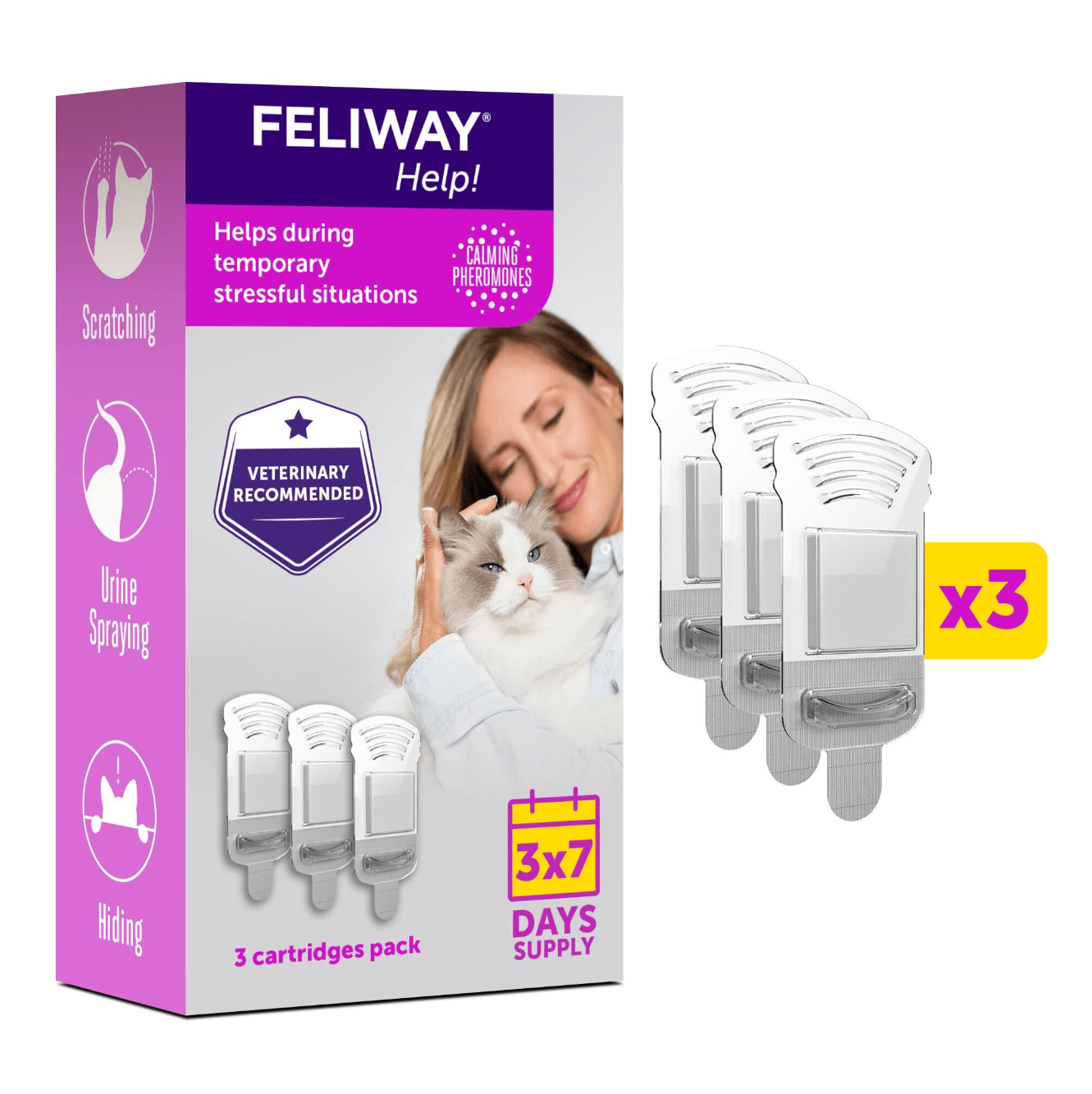
Happy Cat Explains: How to Help Your Grieving Cat
Cats have a reputation for being standoffish or loners, but as cat parents know, this isn’t always the case. Plenty of cats show and want affection from humans and other pets. But no matter how many snuggles your cat usually wants, all cats can grieve too. The loss of another household pet can affect your cat just as much as it can affect you.
By Chris Pachel our FELIWAY Happy Cat Expert and Veterinary Behaviourist
What Do We Mean by Cat Grief?
Grief is a response to the perceived or anticipated loss of someone or something that we have formed a bond or affection with. When a pet dies, we need to observe our grieving cat’s behaviour and emotional state to help them through the grieving process.
However, it’s important to not project our own emotions onto our surviving pets. We need to be mindful to not practice “anthropomorphism,” which is when we attribute human characteristics to non-humans. More importantly, we should not make our observations exclusively through a human lens, known as “anthropocentrism.”
Instead, we need to observe and respond objectively. Cats have unique personalities and quirks, and each cat will grieve differently.

Recognising Cat Grief Symptoms
So, what might we observe in our grieving cat’s behaviour? Grief can manifest for cats in a variety of ways, including:
- A loss of appetite
- Signs of depression or social withdrawal
- Decreased activity
- Changes in social interaction with other family or household members
- Increase in clinginess
- Avoidance of interaction or physical contact.
Cats are also very good at hiding stress and emotions, so you may need to look more carefully for changes in your potentially grieving cat’s behaviour. Are they doing anything differently?
Hiding
Look for an increase in hiding behaviour. Does your cat disappear for longer periods of time than before? They may seem “less present” during times of interaction or play with humans. If your cat is grieving, you may even notice an increase in physical signs of illness. Stress in cats can affect their gastrointestinal, respiratory, or urinary systems too.
Tail Behaviour
A grieving cat may show changes in their body language too. For example, their tail may be in a lowered position. Cats don’t tuck their tail between their legs like dogs do, but if their tail is low or straight out from their body, they may not be content. When they’re happy, a cat’s tail is usually up and often has a curly tip or “question mark” appearance.
Movement
A cat may also show grief in their movements. They may appear more tentative or crouched. They may be less willing to hang out in open spaces or move through the centre of rooms, choosing instead to walk closer to walls and furniture.
Grooming
Grooming patterns can change for cats experiencing bereavement too. They may not groom as often, or they may start compulsively overgrooming.
And remember, cats may also surprise you. A more standoffish cat that didn’t interact with the other pet may grieve more than a bonded cat. You never know with cats!
How to Respond to Your Cat’s Grief
After careful observation, you’ve spotted some signs of grief in your kitty. Now, how do you help a grieving cat? Well, there are several things we can do:
Give Them Time!
Grief is a normal process. If you’ve made sure there are no medical reasons for behaviour changes, it doesn’t necessarily need to be treated. Just like you, they will need time to adjust to life without their companion.
Less is More
Cats often like to be left alone when they’re stressed. Don’t force interaction or change in behaviour if your cat is grieving. They may not want your hugs or snuggles right now. Forcing affection on cats can contribute to resistance or defensiveness, which would be counterproductive to your goal of providing comfort or reassurance!

What Are They Missing?
Think about your cat’s loss from their perspective. Have they lost cuddle time with the departed pet, overnight interaction time, their play partner, or daily companionship? Be aware of their experience.
Don’t Rush to Get Another Pet
Don’t assume that adding another pet to the household will be appreciated. Feline social relationships are complex. It’s important to allow a newcomer the opportunity to make a gradual entry into the social group.
Consider Enrichment
Enrichment looks different for every cat, and the grieving cat’s preferences may shift after losing a housemate. Don’t hesitate to try a variety of options to see what your cat prefers. This could include new food-dispensing toys, interactive play and pounce activities, new elevated surfaces to climb on, or reward-based training.
Keep a Normal Routine
It’s important to maintain familiar cues and conditions, allowing your grieving cat to exist more comfortably despite this change.
Consult With a Veterinary Professional
If you have concerns about your cat’s emotional health or are worried their emotional response is risking their health or safety, ask about the benefit of pheromones, supplements, or medications.
It’s also important to remember that as your cat grieves in their own way, you are grieving too. Give yourself space and time to grieve, and don’t be hard on yourself if you can’t figure out your cat right away. Be observant and present when your cat needs you, and you can help your cat through the grief process in the way that’s best for them.
Would you like more advice from our team of Happy Cat Experts? We have a range of expert articles and guides online, covering everything from how we can understand our cats’ unique personalities to how we can build our relationships with our cats. Or how about staying informed with all the latest tips, Q&As, and FELIWAY product information by signing up to our newsletter?





































